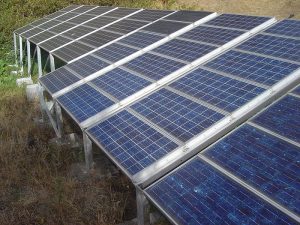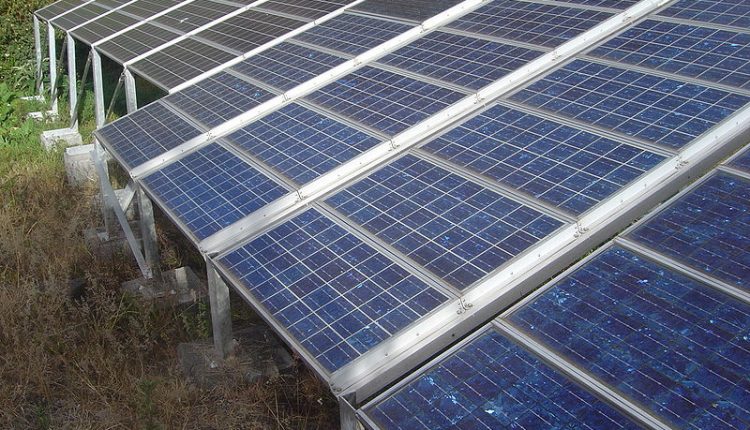Tapping Into The Infrared Region Of The Sun Makes Solar Cells More Efficient, Reduces Costs
Solar energy is on the rise — it’s no secret. Everywhere you look there are homes with solar panels on the roofs and new energy-efficient buildings popping up all over the place.

Installing solar cells can be a bit pricey, though. Most of the costs incurred come from the land and labor needed to install. The cells themselves, typically made of silicon or cadmium telluride, are actually the least expensive part of the process.
Researchers have been looking for a way to make the entire experience less expensive by making solar cells more efficient, which would require less of them, and in turn less land and labor.
A team of researchers from the University of California, Riverside has just figured out a way to boost solar cell efficiency by a method called “upconverting” in which inorganic semiconductor nanocrystals are combined with organic molecules to manipulate photons in the visible and near-infrared regions of the solar spectrum.
“The infrared region of the solar spectrum passes right through the photovoltaic materials that make up today’s solar cells,” explained Christopher Bardeen, professor of chemistry at UCR. “This is energy lost, no matter how good your solar cell. The hybrid material we have come up with first captures two infrared photons that would normally pass right through a solar cell without being converted to electricity, then adds their energies together to make one higher energy photon. This upconverted photon is readily absorbed by photovoltaic cells, generating electricity from light that normally would be wasted.”
Basically the materials can “reshape the solar spectrum,” making it a better match to the photvoltaic materials that today’s solar cells employ. “The ability to utilize the infrared portion of the solar spectrum could boost solar photovoltaic efficiencies by 30% or more,” according to a University of California, Riverside news release.
Testing
The team used cadmium selenide and lead selenide semiconductor nanocrystals, as well as organic compounds t diphenylanthracene and rubrene. The cadmium selenide nanocrystals could convert visible wavelengths to ultraviolet photons, while the lead selenide nanocrystals could convert near-infrared photons to visible photons.
The researchers directed 980-nanometer infrared light at the hybrid material, which generated upconverted orange/yellow fluorescent 550-nanometer light, almost doubling the energy of the incoming photons. The researchers were able to boost the upconversion process by up to three orders of magnitude by coating the cadmium selenide nanocrystals with organic ligands, providing a route to higher efficiencies.
“This 550 — nanometer light can be absorbed by any solar cell material,” said Bardeen.
The inorganic materials in the composite take light in while the organic materials let the light out.
This technology may benefit more fields than just alternative energy. These findings can be used in biological imaging, data storage and organic light-emitting diodes — really any technology that uses photons as inputs or outputs.
For more information visit UCR.

